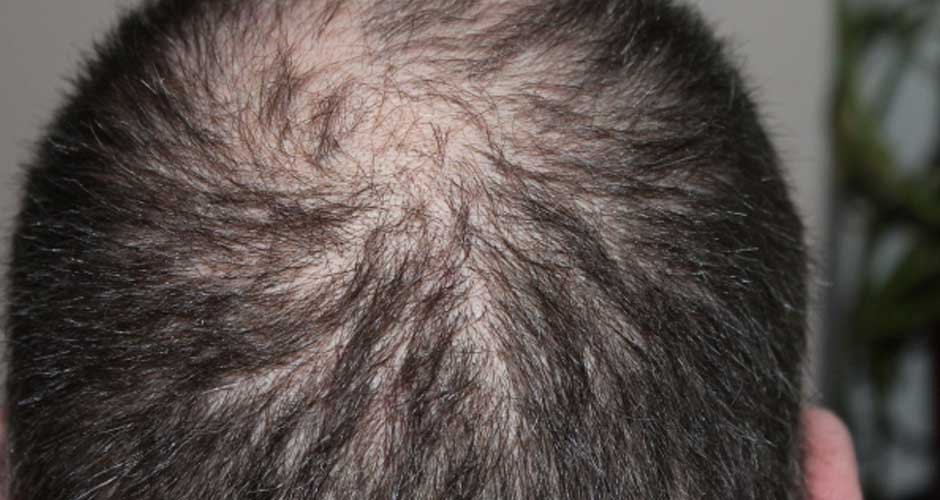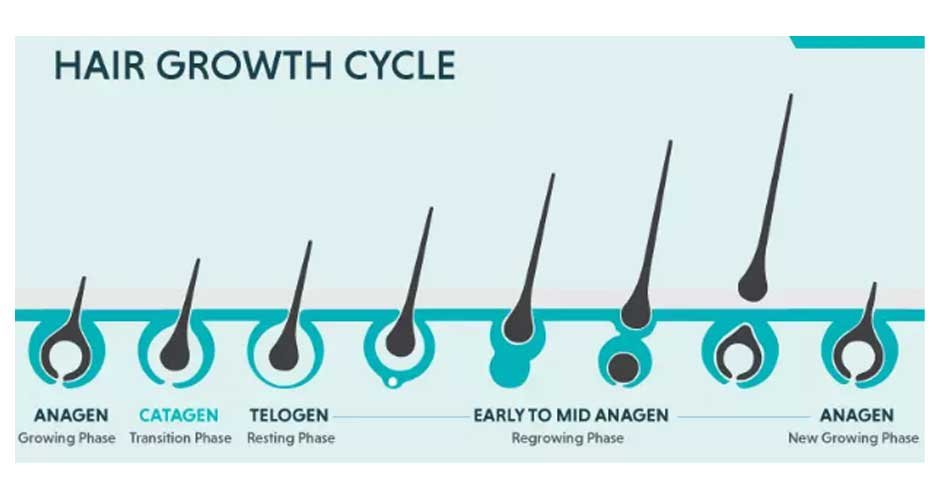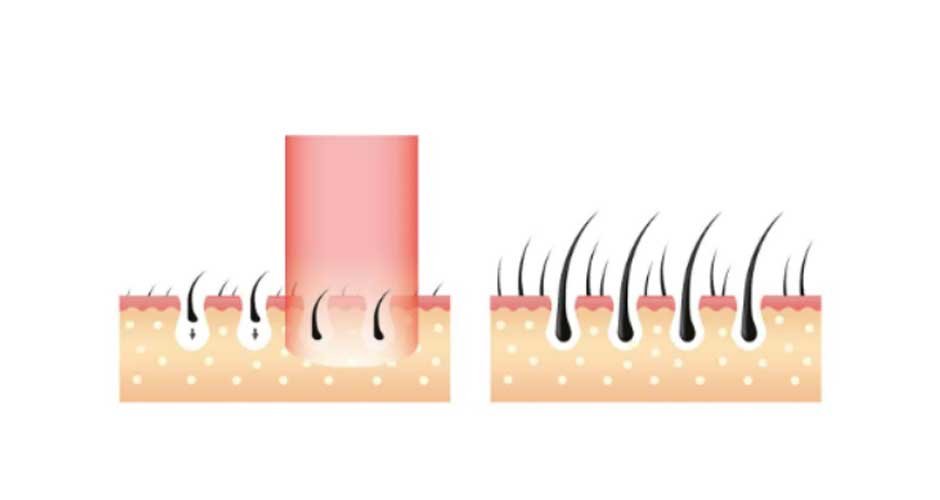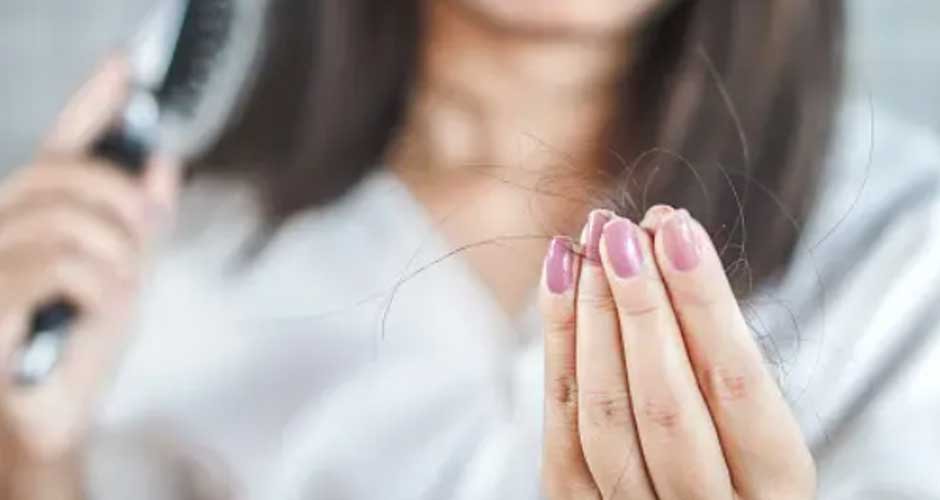Hair loss is an issue that affects both men and women which can be caused by various factors. Although hair loss is largely inevitable, there are ways to slow down the process and even regrow hair. Red light therapy for hair growth has recently gained popularity as an effective treatment option for thinning hair or baldness.
However, it is not a one-size-fits-all solution, and there is still much to learn about how it works and how to use red light therapy for hair growth.
It can be confusing and overwhelming to navigate the world of hair loss treatments. This article will give you a better understanding of the science behind hair loss, discuss the potential causes, provide tips on how to reduce hair loss, explain red light therapy, and offer guidance on how to use it for hair loss.
What Are The Common Types and Causes of Hair Loss?
Before we talk about hair loss treatment, let’s first understand the common types of hair loss. While there are different types of hair loss in humans, the most common ones include:
- Androgenetic Alopecia: This is the most common type of hair loss, which occurs when hormones cause follicles to shrink over time. This results in a gradual thinning of the hair.
- Anagen Effluvium: This type of hair loss is caused by chemotherapy or radiation therapy, as it affects the actively growing cells in the anagen phase.
- Alopecia Areata: Alopecia areata is a form of hair loss that can occur suddenly due to an autoimmune disorder. It causes patches of baldness all over the scalp and may even extend to other areas of the body.
- Tinea Capitis: Tinea capitis, also known as scalp ringworm, is caused by a fungus and can cause hair loss in the affected area. It leads to bald spots that may become inflamed and itchy.
Hair Loss in Men vs. Hair Loss in Women
Although both men and women can suffer from hair loss, the causes and types of hair loss are slightly different.
Hair Loss in Men:
In men, androgenetic alopecia (male pattern baldness) is the most common type of hair loss. This is caused by a combination of hormones and genetics and results in thinning at the crown or receding hairline.

Hair Loss in Women:
Female pattern baldness is similar to male pattern baldness but usually presents as diffuse hair thinning on all areas of the scalp instead of a receding hairline or bald spot. It’s thought to be caused by a combination of hormones, genes, and age.
Other causes of hair loss in women include telogen effluvium, anagen effluvium, alopecia areata, tinea capitis, cicatricial alopecia, hair shaft abnormalities, and hypotrichosis.
Common Causes and Contributing Factors to Hair Loss
- Stress: Stress can cause hair loss by increasing the production of hormones such as cortisol, which in turn, causes more hairs to enter the telogen phase.
- Hormones: Hormonal imbalances due to pregnancy, menopause, or other medical conditions can also lead to hair loss.
- Nutritional Deficiencies: A lack of certain vitamins and minerals can contribute to hair loss because they are essential for healthy hair growth.
- Medications: Certain medications, including those used to treat depression and high blood pressure, can lead to temporary or permanent hair loss.
- Genetic Predisposition: Androgenetic alopecia is largely caused by genetics and cannot be prevented.
- Medical Conditions: Certain medical conditions, such as lupus, can contribute to hair loss. Moreover, hair loss can be a symptom of underlying medical conditions such as hypothyroidism or anemia.
How Hair Loss Occurs?
Hair growth occurs in a natural three-step process called the hair cycle. This cycle is composed of the anagen (growth) phase, catagen (transition) phase, and telogen (resting) phase [1].

During the anagen phase, cells rapidly divide at the base of the follicle and form new hairs. This is when most of the hair growth happens, as it can last for several years.
Then, during the catagen phase, which lasts about two to three weeks, the hair transitions from active growth to a dormant state before entering the final resting stage: telogen. During this time, old hairs are shed, and new ones begin to grow. The entire cycle repeats itself.
When this hair cycle is disrupted, more hairs enter the resting phase than usual, resulting in increased shedding and thinning. This occurs when hormones cause follicles to shrink over time or when medications, stress, pregnancy, or other medical conditions cause disruptions in the growth cycle.
Red Light Therapy as a Treatment Option
In the realm of available treatment options, a notable therapy that has garnered considerable attention is red light therapy (RLT). With its rising popularity, RLT has emerged as a non-invasive and drug-free approach that holds promise for effectively addressing the issue of hair loss.
This innovative therapy utilizes red light to stimulate and revitalize the hair follicles during anagen and catagen phase, without the need for invasive procedures or pharmaceutical interventions. Its benefits have been proved by many studies.
Does Red Light Therapy Work for Hair Loss?
Yes! It works by stimulating the production of adenosine triphosphate (ATP), which is a key energy source in the body that helps fuel important processes such as cell growth and repair.
When used to treat hair loss, red light therapy stimulates blood flow to the scalp and increases circulation. This increases nutrient delivery to the hair follicle, promoting healthy hair growth. Red light also encourages the production of collagen and elastin fibers in the dermal layer of skin that surround and support each individual hair follicle.
In addition, a study[2] found that, by reducing the inflammatory manifestations of the hair follicles that inhibit hair growth, red light therapy was able to boost the hair regrowth activity of Minoxidil.

The results of several clinical studies conducted on RLT have shown that it can be an effective treatment for hair loss in both men and women.
In 2017 [3], researchers conducted a trial to assess the effectiveness of low-level laser therapy on women with hair loss. The study found that women who received red light therapy at 650mn had a 51% increase in their hair count.
Another study [4] investigated the impact of 650 nm red light on treating AGA by studying hair follicles in a laboratory setting. The study discovered that exposing the hair follicles to low-level 650 nm red light led to increased hair follicle growth in the experimental tissue model.
The use of 650 nm red light consistently delayed the transition of hair growth from the growth phase to the regression phase in a lab setting. Based on RNA-seq analysis and gene clustering, processes such as leukocyte transendothelial migration, metabolism, and adherens junction may play a role in how 650-nm red light stimulates hair follicles.
Red light therapy is a popular treatment that some people claim can help with hair loss. However, like all treatments, it has its advantages and disadvantages. If you’re willing to spend money and wait for results, it could benefit you regarding hair loss.
How to Use Red Light Therapy for Hair Growth?
You can use red light therapy for hair growth either at home using a wearable device or in a specialized clinic. Clinics use medical-grade lasers with higher output and greater efficacy than those available for home use, but the cost may be prohibitive.
Home LED devices are equally effective with clinics laser at treating hair loss, but may take longer to see results. These devices give your wallet more options.
When choosing a device for home use, it is essential to consider factors such as affordability, portability, and safety. It is also important to check the power output of the LEDs and ensure that they are designed to penetrate deep into the scalp.
Red light therapy can now be conveniently done at home with affordable devices. You can even bring it with you on the go. Home-use devices such as the red light caps are designed to treat thinning hair or balding patches on the scalp in just 15 minutes twice a week. The main advantage of these devices is that they offer convenience, affordability, and portability.
Finally, be sure to follow the instructions carefully and perform regular maintenance on the device to get optimal results with red light therapy.
Enhancing Hair Health Through Healthy Lifestyle Habits
Proper hair care practices
When looking to prevent hair thinning and loss, it is essential to practice proper hair care. Healthy habits such as avoiding tight hairstyles, limiting the use of heat styling tools, and using minimal amounts of styling products can help prevent damage to the scalp.
Maintain a balanced diet
In addition to proper hair care, a balanced diet that includes essential vitamins and minerals [5] helps keep your scalp healthy. Vitamins such as vitamin A, B-complex vitamins, and biotin help promote new hair growth; while iron, zinc, and omega-3 fatty acids are important for maintaining the health of existing hairs. Foods like salmon, spinach, lentils, and beef liver can all provide these nutrients in abundance. Additionally, smoking, drinking alcohol, and stress can all lead to hair thinning, so it is important to limit these as much as possible.
Engage in regular exercise
Regular exercise, such as walking or jogging, helps improve circulation throughout the body. This increased blood flow to your scalp helps promote healthy hair growth by delivering essential nutrients to the follicles. Exercise also increases endorphins and relieves stress, both of which have positive effects on hair health.
Managing underlying health conditions
It is important to address any underlying health conditions contributing to hair loss. Conditions such as hypothyroidism or an iron deficiency can cause excessive hair shedding, so it is necessary to consult a medical professional for proper diagnosis and treatment.
Conclusion
You may still need some awareness and education on how to use red light therapy for hair growth but with the correct information and a few lifestyle changes, it is an effective treatment option for hair loss.
The key to successful red light therapy for hair growth is consistency with your treatments and supplementing them with other healthy lifestyle habits. With some patience and dedication to the process, you can stop or even reverse your hair thinning.
Additionally, proper hair care practices, a balanced diet rich in essential nutrients, regular exercise, and managing underlying health conditions can all help support healthy hair growth and maintenance.
References
- Dmitri Wall, Nekma Meah, Nicole Fagan, Katherine York, and Rodney Sinclair. Advances in hair growth. https://www.ncbi.nlm.nih.gov/pmc/articles/PMC8808739/. 2022 Jan 12. doi: 10.12703/r/11-1
- Yann F. Mahe, Ahsène Cheniti, Charlotte Tacheau, Rosaria Antonelli, Lien Planard‐Luong, Simon de Bernard, Laurent Buffat, Philippe Barbarat, and Leila Kanoun‐Copy, Low‐Level Light Therapy Downregulates Scalp Inflammatory Biomarkers in Men With Androgenetic Alopecia and Boosts Minoxidil 2% to Bring a Sustainable Hair Regrowth Activity. doi: 10.1002/lsm.23398
- Shelly Friedman, Patricia Schnoor Novel Approach to Treating Androgenetic Alopecia in Females With Photobiomodulation (Low-Level Laser Therapy)Dermatol Surg. 2017 Jun;43(6):856-867. DOI: 10.1097/DSS.0000000000001114
- Kai Yang, Yulong Tang, Yanyun Ma, Qingmei Liu, Yan Huang, Yuting Zhang, Xiangguang Shi, Li Zhang, Yue Zhang, Ji’an Wang, Yifei Zhu, Wei Liu, Yimei Tan, Jinran Lin, and Wenyu Wu. Hair Growth Promoting Effects of 650 nm Red Light Stimulation on Human Hair Follicles and Study of Its Mechanisms via RNA Sequencing Transcriptome Analysis. Ann Dermatol. 2021 Dec; 33(6): 553–561. doi: 10.5021/ad.2021.33.6.553
- Hind M. Almohanna, Azhar A. Ahmed, John P. Tsatalis, and Antonella Tosti. The Role of Vitamins and Minerals in Hair Loss: A Review. Dermatol Ther (Heidelb). 2019 Mar; 9(1): 51–70. doi:10.1007/s13555-018-0278-6






